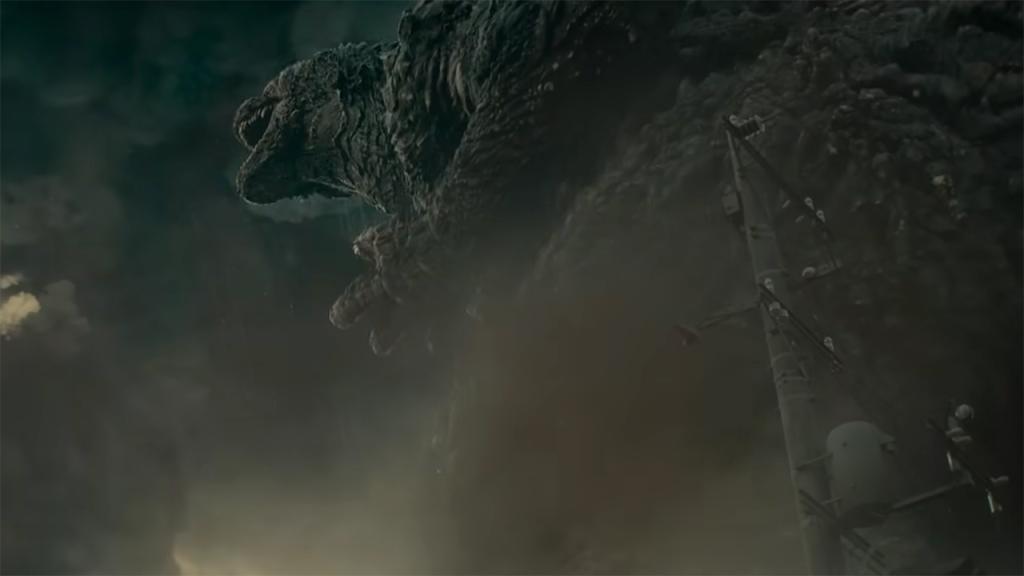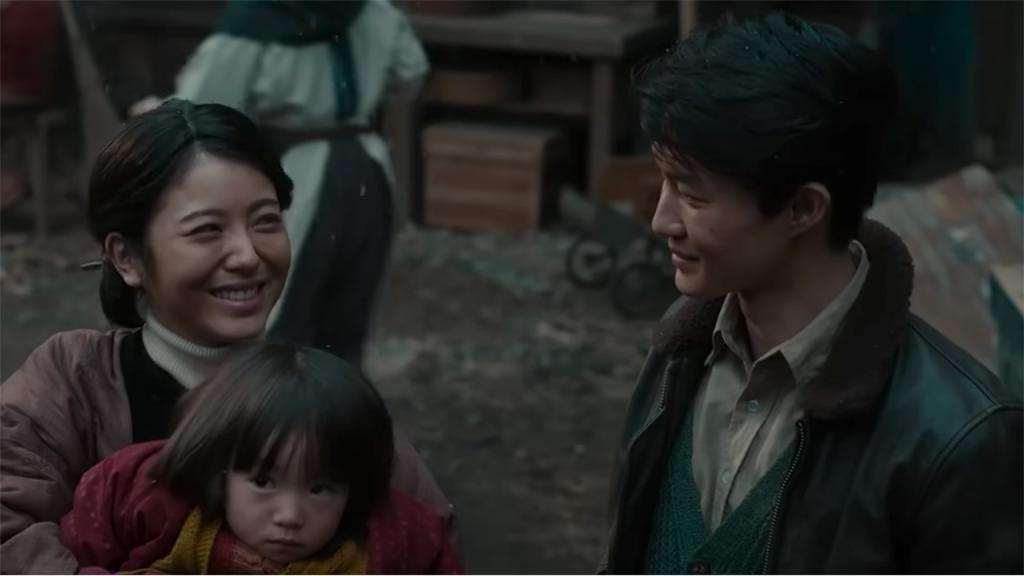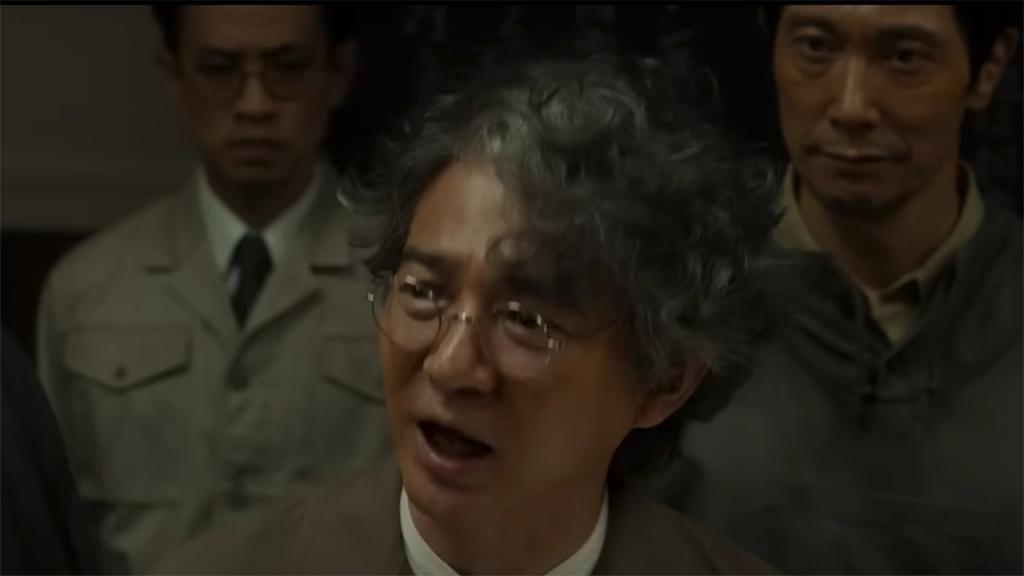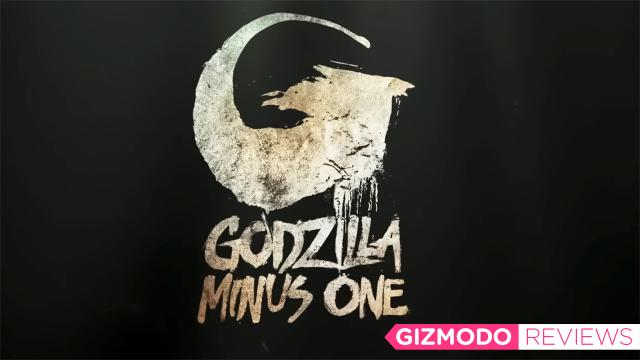Takashi Yamazaki’s Godzilla Minus One shows just how well Japanese directors understand what makes Godzilla enthralling in the first place.
I am a big Godzilla fan. I’m not going to claim to be the biggest, but i’m certainly keen. Keen enough to have taken a tiny Godzilla nearly everywhere I’ve travelled for more than a decade now, detailing his adventures on Instagram, for example.
For the past year I’ve been most hyped not so much about Godzilla x Kong: The New Empire, but instead Godzilla Minus One, Japan’s latest homegrown take on my favourite Kaiju.
Only problem was, it looked for the longest time like I wasn’t going to be able to see it. It debuted in Japan on November 1st, and was announced for a US cinema run starting December 1st, but for a long while it looked like that was going to be it. Then at nearly-the-last-minute it was picked up for a limited run in select Australian cinemas.
Did I run, not walk to my keyboard to book in tickets? You bet I did.
Do I have thoughts about Godzilla Minus One? You’re reading them.
However, I do have to say that I HATE spoilers and I hate the idea that I might inadvertently spoil anything for anyone. I’d like to hope that this is a common idea, because not being a jerk feels like it’s a better path to tread than being one. Maybe that’s just me.
There’s a chance that you’ve stumbled across this review before you’ve seen Godzilla Minus One.
While I know that Gizmodo has a shiny banner dedicated to flagging spoilers, I’m always worried that somebody will miss it, or it won’t load due to a problem with your network connection… so I like to be sure.
Want just a recommendation as to whether you should see it without the spoilers?
Absolutely you should. It’s a movie where the scope works very well in a cinema, but it’s only doing limited dates and distribution in Australia, so act fast.
But if you choose to scroll lower than the spoiler banner below, well… don’t say I didn’t warn you, or give you enough of a preamble to back out politely.

While the Legendary Pictures “Monsterverse” series of films have their fans – and I certainly don’t mind them for the popcorn spectacles they are for the most part, save for the ridiculous idea that Kong and Godzilla are in any way equal in power – it’s in his homeland of Japan that Godzilla has seen the most interesting spins and reinventions in recent years.

2016 brought us Shin Godzilla, still one of my favourite Kaiju flicks of all time, there’s the Netflix series of slightly-confusing environmentally themed movies, and then there’s the chaos-theory inspired Godzilla: Singular Point to enjoy.
However, while I do think all three have their moments of brilliance (especially Shin Godzilla, a film I wrote a university level culture essay on this year – I did mention the Godzilla enthusiasm earlier on, right?), they do rest and rely on having some level of knowledge of Godzilla to start with.
That’s not exactly where Godzilla Minus One plays, because it sets up yet another Godzilla chronology – most of the regular cinema films save for Shin have in some way flexed around the 1954 original – by setting the action in the late 1940s. This is Godzilla-before-Godzilla, and it poses a whole different level of challenges for an already pummelled Japanese population to deal with.
The key way that Godzilla Minus One rises above the way that Legendary tends to play its movies is in recognising that, ultimately, good Godzilla movies don’t need to be about, well… Godzilla.
Yeah, I know, that sounds all kinds of wrong, because we’re there to see the big scaly guy stomp some buildings and smash some tanks, right? Relax, there’s plenty of that.
The problem, though is that while the spectacle of Godzilla is great and crowd pleasing, two hours of that starts to lose impact. Think about the ending battles of a lot of the more recent Marvel movies, where there’s hundreds of digital avatars bouncing around the screen like pinballs.
You never really care about any of them, or figure there’s that much peril, because the scope becomes overwhelming at first, and a little dull and predictable if it lasts too long. Oh look, a giant sky beam and a huge army. How thrilling.

Godzilla Minus One avoids this trap by very sensibly providing a primary human focus. Its central character is Kōichi Shikishima, played very well by Ryunosuke Kamiki. Shikishima is a kamikaze pilot in the dying days of the war who abandons his mission on the pretext that his plane is faulty.
He lands on Odo island to have it repaired, only see the island itself subject to an attack by a pre-nuclear Godzilla.
Godzilla is still terrifying enough at that size and scope, albeit a little reminiscent of Jurassic Park’s T-Rex in some shots. Shikishima is one of only two survivors, eventually making his way back to what’s left of Tokyo… which isn’t much.
The Minus One in Godzilla Minus One reflects the idea that after the conclusion of the war, Japan was sitting at zero, positing the question as to what would happen if Godzilla turned up at that time.
The human focus is important here, from Shikishima being rounded on by a surviving neighbour for not completing his kamikaze mission – it’s clear it would have made no difference, but people in pain lash out and this was something of a common idea amongst elements of the population of the time – to the way that Tokyo is slowly rebuilding itself as Shikishima rebuilds his ruined family home and takes in Noriko Ōishi, a street thief who literally drops a baby, Akiko, into his lap one day while fleeing a theft charge. Slowly, and quite painfully given Shikishima’s survivor’s guilt and clear PTSD, they start to rebuild their lives.
Then the U.S starts nuclear weapon testing on Bikini Atoll, leading to the mutation of Godzilla, and returning to the series classic themes of being a cautionary tale about the serious dangers of nuclear power. Meanwhile, Shikishima’s taken up a risky job destroying sea mines from a boat that’s clearly meant to be evocative of the Daigo Fukuryū Maru, AKA the “Lucky Dragon 5” boat that was a strong part of the inspiration for the 1954 original film.
Fun trivia fact: That boat still exists, and you can visit it if you’re willing to go just-slightly-off the tourist trail in Tokyo, like so:
That’s when the action Kaiju parts of the movie start, but they simply wouldn’t work so well without the underlying human drama, as well as the way that Godzilla’s destruction of an already shattered Tokyo hits home. It’s just so much more effective to have him work at a human scale, and what happens to Noriko is a very smart narrative choice that pays off on several levels.
Want just the thrills and spills side? There’s scenes where she has to escape a train that ‘Zilla is having a bit of a nom on that serve that purpose. But it’s in the way that she’s killed that the film gives Godzilla real impact.
This isn’t some long drawn out dramatic music moment. Instead, she shoves Shikishima into an alleyway to save him and is near instantly blown away by the shockwave of Godzilla’s blast. It’s jaw-droppingly effective, and while (I did note spoilers, right) she survives at the end of the movie, it shows both the peril and real human cost of this kind of disaster, instead of just saying “ooh, a lot of digital buildings are being trashed, isn’t this EXCITING”?

I’ve also got to call out Kenji Noda (Hidetaka Yoshioka)’s plan for taking down Godzilla, because it honestly surprised me in the best possible way. The 1954 movie uses Serizawa’s “Oxygen Destroyer” to take down Godzilla as a thinly veiled analogue for nuclear weapons themselves, but in 1948 Japan had no nuclear weapons – and in fact US control of the country and prohibitions on publication meant that large swathes of the population didn’t even know exactly what had happened at Nagasaki or Hiroshima – so the use of freon gas and floaties sounds actually plausible once you get past the implausibility of Godzilla itself.

Again, the plan works so well because of the human elements, whether that’s Shikishima’s survivor’s guilt drawing him into a destructive kamikaze spiral to finally “end his war”, or Noda and ship’s captain Yōji Akitsu (Kuranosuke Sasaki) refusal to let trainee Shirō Mizushima (Yuki Yamada) in on the final mission to try to quell his dreams of war-based glory.
Taking down Godzilla is highly risky and seriously dangerous, and it’s these small, human dramatic moments that make it really work far more than just the – admittedly excellent – shots of Godzilla emerging from the water or going for a shopping and stomping browse through Ginza the way many tourists do.
It’s also here that, while the film reaches its dramatic climax that it finally faces down one of the trickier aspects of its setting, both for domestic Japanese audiences – and let’s remember here, this is a Japanese Godzilla film primarly made for Japanese audiences – as well as western ones. Japan’s role in the second world war is a complex one with a lot of cultural conflict around issues of guilt, war crimes and reparations and what kind of Japan emerged after the war was done.
I was somewhat concerned while watching that it might be something of a sop to the far-right nationalistic side of Japanese politics that casts Japan as a pure “victim” in the war and paints kamikaze pilots as pure heroes.
Clearly Shikishima’s viewpoint, while tortured by his PSTD is that this precise kind of heroic sacrifice is the only way he can atone for surviving, and that could have been grasped upon by the far right in Japan… were it not for the way that it plays out, with gruff mechanic Sōsaku Tachibana (Munetaka Aoki), up until that point Shikishima’s harshest critic, simply telling him to live. It’s a powerful moment in a powerful film that clearly pays homage to the 1954 original, but truly does its own thing with Japan’s most famous (and best) Kaiju.
Godzilla Minus One isn’t just a good Godzilla movie. It’s good cinema, period. Go see it if you can.
Godzilla Minus One is now playing in select cinemas in Australia, but not for long. The author saw the movie with a ticket he purchased with his own money. He wishes people wouldn’t eat popcorn quite so loudly in cinemas, but what can you do?
